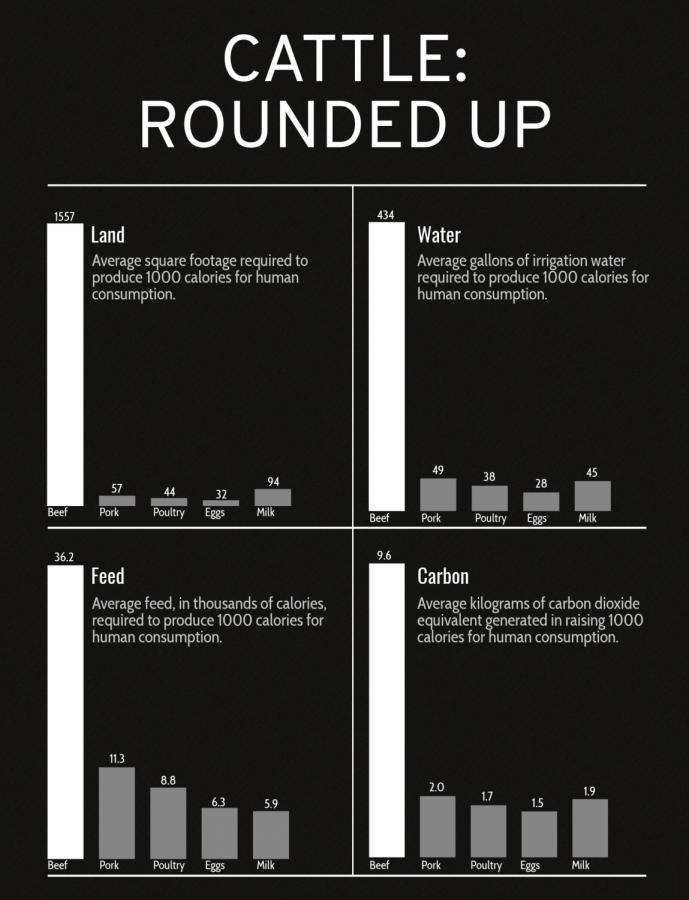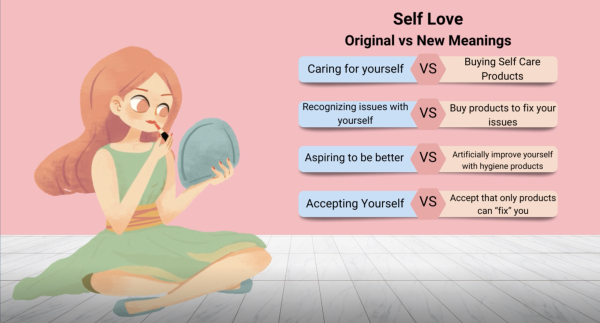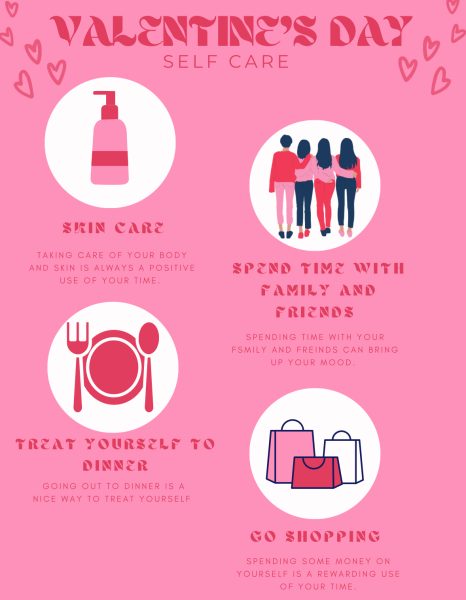Where’s the beef?
America’s beef problem affects Nebraskans by creating environmental and social problems
February 14, 2019
Callaway, Nebraska is a small town surrounded by barren sandhills and open fields, along the beginnings of the South Loop River, which seems to meander aimlessly through the valley. And though the town is quiet, the people are hard at work. Jim Jenkins is all in the food business, owning a ranching and feeding operation, a farm, and some barbecue restaurants in Callaway, as well as in other towns.
“It’s a pretty diverse lifestyle, I love the outdoors, I love being active,” he told me, hard at work in his office preparing for tax season.
I feel like raising food and being part of not only the production side of it, but also on the retail and restaurant side of it is providing a useful service to people on this planet earth,” Jenkins said.
After a drive through Nebraska, it is not surprising that nearly a fifth of Earth’s land is devoted to cattle and cattle feed production. Nearly the entirety of the state is devoted to agricultural industries, with giant feedlots, large swaths of lands with hundreds of cows and a lingering smell, covering the landscape. Where there are not cows, there are seemingly infinite rows of corn, most of which does not go to feed people. Increasingly, corn grown in fields has gone to the cows.
America’s obsession with beef continues to rise. In the past four years, sales of beef have approached the $100 billion mark. This is good for companies like Tyson, which expect record profits for the 2019 year.
Although this is a big money maker for the producers, beef production takes more land, water, and makes more of a greenhouse gas footprint than any other protein, according to a report by the National Academy of Sciences.
Since 2006, corn grown in the Midwest has been diverted from direct to market production and towards cattle feed because of extreme surpluses. By 2017, most of Nebraska’s corn went to the more condensed feedlots that are seen across the state today. Eastern Nebraska has some of the most fertile land in the world and it could go to vegetable and fruit production, but instead it goes to grain production to feed our hunger for meat.
Although beef has its health benefits, it also has its curses. Heart failure rates are much higher among those who eat beef, as well as obesity and type-two diabetes rates. Heavy eaters of beef also have reported weaker sex drive and a harder time completing physical tasks than those who are lighter eaters according to the US Institute of Health. Red meat is also up for debate on whether it causes cancer, though if it does it only slightly raises the risk.
Even with this, Americans continue to demand it, with no signs of slowing down.
It is All-American, hamburgers at fast food restaurants, steakhouses with giant statues of cattle on top, ranchers in cowboy hats riding horses on the plain herding cattle. Cattle production has played a strong role in American history and politics, from the rise of Dodge City, Kansas, to the stockyards in South Omaha.
It is a culture even I participate in, a self glorified dream of living in a small town in an open landscape. Open spaces attract me and many other Midwesterners and seems only a fantasy for many people in the Midwest, including English teacher at Omaha North, Mark Gudgel.
“My grandfather, who had died six months after I was born, homesteaded out in the sandhills. Over time he acquired four sections of land, built a house, expanded the house, built the outbuildings, dug all the wells. So, I grew up going out there, and it’s such an incredibly serene environment. I can go out and run on those gravel roads, ten, twelve, even fifteen miles and never see anybody,” Gudgel said.
“One of the quandaries which my wife and I are wrestling with is keeping the ranch in the family. At some point in time my wife and I will have the house, which we still go back and spend Christmas and Thanksgiving, and holidays with my family. Most small operations, like that one, get sold to larger operations, and they just get larger and larger. A desire I have, maybe for retirement, is to just move out there and return to a slower simpler way of life,” Gudgel said.
The presence of American agriculture has risen and fallen with time, especially as diets change across the nation with new food movements, such as gluten free dieting. As the average income rises however, people can afford more expensive foods, which increases the demand for meats. With this new growth, the demand for beef has taken a toll on the environment, polluting waterways, smelling up neighborhoods and towns, and becoming the debate of cities across the country.
Alex Reick, 12, used to live in South Omaha, a central point of the meatpacking industry in the state.
“We would come home at four o’clock and we would get stuck behind the cow pelt truck or the cow manure truck, so the roads were always covered in chunks of cow manure. It smelled bad, and of course they were releasing their exhaust fumes too, so you would get that extra little bit of pollution,” Reick said.
Many, especially in larger urban centers, take to vegetarianism and veganism to fight this. Although it can have many health benefits if done correctly, it has very little impact on the environment. Meat consumption continues to rise in the United States and across the world, even with the advent of these new ways to fight it.
Cattle consumption is a two headed monster, because while it ravages the body in large quantities, it destroys the ecosystems on planet earth. Primary reasons for cutting the Amazon Rainforest stems from the need for soybeans and corn, as well as cattle ranches. Nearly all the American West has been converted to ranches and farms. The consumption of beef is not all bad, but the overconsumption of it can create or add to worldwide problems and increase chances of early mortality.
But, because there is demand, people like Jim Jenkins stay at work, providing the food that we consume. How do we keep hard workers like this in the job, yet fix the industry to where it does not have as much of an impact? Ultimately, telling people not to eat meat is not going to work, our ancient hunter-gatherer habits are not going to be broken with mere legislation. Somehow the industry needs to cater to environmental stewardship while continuing to maintain the economic benefits which it provides.






